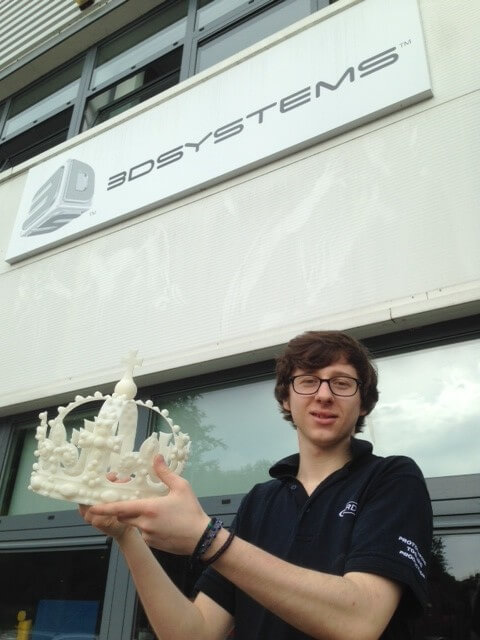In the infamous Tudor monarch’s reign, it would have been touched by a mere handful of privileged people: the Archbishop of Canterbury, the royal jeweller, and, of course, the King himself. But this May, for the first time, visitors to Hampton Court Palace will be able to touch and even try on a 3D printed version of King Henry VIII’s crown.
Historic Royal Palaces, the independent charity responsible for Hampton Court Palace, have created the first 3D printed version of a royal crown, with the help of CRDM & 3D Systems.
To see a video of the crowns being made, go to bit.ly/3Dcrown
The real crown – on display to the public at Hampton Court – is a re-creation of the original, which was destroyed by Oliver Cromwell in 1649, after the execution of King Charles I. A potent symbol of royal power, the crown is made of silver gilt and holds 344 rubies, sapphires, emeralds, diamonds and pearls and five religious sculptures. It was painstakingly recreated in 2012 by the then Crown Jeweller, Harry Collins, following extensive research by Historic Royal Palaces’ curators into original inventories and contemporary paintings.
The crown was scanned at the palace using a combination of structured light 3D scanning and cross polarised photography, and following processing of the data into a workable 3D model file, was printed using Stereolithography (SLA) and Selective laser sintering (SLS) techniques. The crown’s delicate shape and fine details made this process a particular technical challenge.
The printing is part of Historic Royal Palaces’ commitment to explore how new digital technologies can take the palaces and their stories to new audiences in previously impossible ways. Future plans for the printed crowns include using them as a tactile experience for blind and partially sighted visitors, as well as for school groups – both for handling, (especially for children with Special Educational Needs) and as a printable code for schools experimenting with 3D printing in the classroom.
Tim Powell, Digital Producer for Historic Royal Palaces said:
“The crown is such a powerful symbol of Henry and his reign – but historically, it was touched by so few people. It’s deeply exciting to be able to use 3D printing technology to put this piece of history into people’s hands – and allow them to imagine what it must have felt like to wear something so spectacular and meaningful. Thankfully this technology wasn’t available to King Henry – who knows what he might have done with a few more blocks and axes!’
Simon Hammond, Regional Sales Manager for CRDM & 3D Systems said:
“We were delighted to be able to support Tim and the Historic Royal Palaces in the 3D printing of such an iconic piece of British history. It was amazing to see the detail that went into the original crown was faithfully replicated on the copies. It was a privilege to deliver the crowns in person through the main gates at Hampton Court and onto the palace itself; I even saw Henry VIII himself, in full regalia, and even he knew about the project!”






